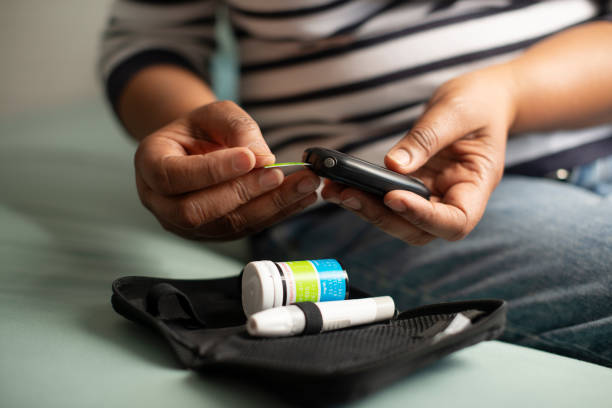Understanding Diabetes: What You Need to Know
Diabetes is a long-term condition that affects how your body processes sugar (glucose), an essential source of energy. Millions of people worldwide live with diabetes, and proper management is crucial for maintaining good health. If left uncontrolled, it can lead to serious complications, including heart disease, kidney failure, nerve damage, and vision problems.
The good news is that with the right approach—such as healthy eating, regular exercise, blood sugar monitoring, and medication when needed—you can keep it under control and reduce the risk of complications. Understanding how it affects your body is the first step toward better health.
Types of Diabetes
There are three main types of diabetes:
- Type 1 Diabetes: An autoimmune condition where the body attacks insulin-producing cells in the pancreas. This type requires daily insulin injections or an insulin pump for survival.
- Type 2 Diabetes: A condition where the body becomes resistant to insulin or doesn’t produce enough. This type is more common and is often linked to lifestyle factors like poor diet and lack of exercise.
- Gestational Diabetes: A temporary condition that occurs during pregnancy. It increases the risk of developing Type 2 diabetes later in life.
Each type requires proper management to prevent complications. Understanding the type of diabetes you have is crucial for developing an effective management plan.
Early Signs and Symptoms of Diabetes
Recognizing diabetes early can help prevent severe complications. The symptoms of diabetes can be mild at first, which is why many people remain undiagnosed for years. Some of the most common symptoms include:
- Increased thirst and frequent urination: Excess sugar in the bloodstream pulls fluid from tissues, leading to dehydration and increased urination.
- Unexplained weight loss: When your body can’t use glucose properly, it starts breaking down fat and muscle for energy, leading to weight loss.
- Fatigue: High blood sugar levels can make you feel tired and sluggish.
- Blurred vision: High blood sugar levels can affect fluid levels in the eyes, leading to temporary vision problems.
- Slow-healing wounds: It affects circulation and the immune system, making it harder for wounds to heal.
- Tingling or numbness in hands and feet: Over time, high blood sugar can damage nerves, leading to numbness or pain, often in the feet.
If you experience these symptoms, consult a healthcare provider immediately for testing and diagnosis.

How to Manage Diabetes Effectively
Proper diabetes management can improve your quality of life and prevent complications. Here’s how you can take control:
1. Healthy Eating for Blood Sugar Control
Managing diabetes starts with a well-balanced diet. The foods you eat directly affect blood sugar levels, so making smart choices can help prevent dangerous spikes and crashes. Here are some key tips for better blood sugar control:
Prioritize Whole, Unprocessed Foods: Stick to nutrient-dense options like fresh vegetables, lean proteins, whole grains, and heart-healthy fats. These foods provide essential vitamins and minerals while keeping blood sugar steady.
Choose Low-Glycemic Index (GI) Foods: Foods with a low GI digest more slowly, helping to prevent sudden blood sugar spikes. Some great choices include lentils, quinoa, non-starchy vegetables, berries, and nuts.
Avoid Sugary Drinks and Processed Foods: Beverages like soda and energy drinks, along with packaged snacks and fast food, can cause rapid spikes in blood sugar. Over time, frequent consumption can lead to insulin resistance and other health issues.
Eat Balanced Meals: Each meal should contain a mix of protein, fiber, and healthy fats. This combination slows down sugar absorption, keeping blood sugar levels stable throughout the day. Pair lean protein with whole grains and non-starchy vegetables for a well-rounded plate.
Learn more about diabetes-friendly diets from the American Diabetes Association
2. The Role of Exercise in Diabetes Management
Regular physical activity is essential for managing diabetes. Exercise helps your body use insulin more effectively by moving glucose from the bloodstream into muscle cells for energy. Staying active can also improve heart health, boost mood, and support weight management. Here’s how to make exercise a part of your routine:
Get at Least 150 Minutes of Moderate Exercise Per Week: Aim for at least 30 minutes of activity on most days. Brisk walking, swimming, cycling, or dancing can help improve insulin sensitivity and regulate blood sugar levels.
Incorporate Strength Training: Building muscle helps your body process glucose more efficiently. Try lifting weights, using resistance bands, or doing bodyweight exercises like squats and push-ups at least twice a week.
Move More Throughout the Day: Even small activities can make a difference. Take the stairs instead of the elevator, go for short walks after meals, stretch during breaks, or engage in hobbies like gardening.
Reduce Stress with Exercise: Physical activity helps lower stress hormones, which can impact blood sugar levels. Yoga, tai chi, or deep breathing exercises can be especially beneficial.an negatively impact blood sugar levels. Find an activity you enjoy to stay consistent.

3. Monitoring Your Blood Sugar Levels
Tracking your blood sugar levels is essential for managing diabetes. Regular monitoring helps you prevent dangerous highs and lows, allowing you to make better choices for your health. Here’s how to stay on top of your blood sugar levels:
Check Your Blood Sugar as Recommended by Your Doctor: Your healthcare provider may suggest testing at specific times, such as before meals, after eating, or at bedtime. Sticking to a routine can help you understand your body’s response to different foods and activities.
Keep a Log of Your Readings: Writing down your blood sugar levels—or using an app—can help you spot patterns over time. This makes it easier to identify what causes spikes or drops, such as certain meals, exercise, or stress.
Understand How Food, Exercise, and Stress Affect Your Levels: Blood sugar isn’t just influenced by what you eat. Physical activity, emotions, and even sleep can play a role. Learning how these factors impact your glucose levels can help you make smarter lifestyle choices.
Use the Right Monitoring Tools: Many devices are available to help track blood sugar. Traditional glucose meters require finger-prick testing, while continuous glucose monitors (CGMs) provide real-time updates without frequent pricks. Your doctor can help you choose the best option for your needs.ch provide real-time blood sugar readings without the need for frequent finger pricks.
4. Medication and Insulin Therapy
For some people with diabetes, lifestyle changes alone may not be enough to keep blood sugar levels in check. In these cases, doctors may prescribe medications or insulin therapy to help manage the condition effectively. Here’s what you need to know:
Oral Medications: Many people with Type 2 diabetes take oral medications to help the body use insulin more efficiently. Some drugs improve insulin sensitivity, while others stimulate the pancreas to produce more insulin or slow down sugar absorption in the intestines.
Insulin Injections or Pumps: People with Type 1 diabetes—and some with Type 2 diabetes—may require insulin therapy. Insulin can be injected with a syringe, pen, or delivered through an insulin pump for continuous blood sugar management.
Other Medications: It often comes with other health concerns, such as high cholesterol or high blood pressure. Your doctor may prescribe additional medications to lower your risk of heart disease and other complications.
Follow Your Doctor’s Guidance: Never change your medication dosage or stop taking it without medical advice. Proper use of medications, combined with a healthy lifestyle, can help keep blood sugar levels stable and prevent serious health issues.
Preventing Diabetes-Related Complications
It can lead to serious health issues if left unmanaged. Long-term high blood sugar levels can damage organs and blood vessels. To reduce your risk:
- Take care of your heart: High blood sugar can damage blood vessels, increasing heart disease risk. Maintain a heart-healthy diet and exercise regularly.
- Protect your eyesight: Diabetes is a leading cause of blindness. Get regular eye exams to check for diabetic retinopathy.
- Keep your feet healthy: Nerve damage can cause foot problems, so check for cuts, blisters, or infections daily.
- Manage stress levels: High stress can impact blood sugar. Practice relaxation techniques like yoga, deep breathing, or meditation.
- Stay up-to-date on vaccinations: People with diabetes are more prone to infections. Get flu shots and other recommended vaccines.

Living a Healthy Life with Diabetes
Managing diabetes is a lifelong commitment, but it doesn’t have to be overwhelming. Small, consistent changes can make a big impact. Surround yourself with support from family, friends, or a diabetes management group.
- Stay informed: Keep up with the latest diabetes research and treatment options.
- Set realistic goals: Make gradual lifestyle changes rather than drastic ones.
- Find a community: Support groups or online forums can provide encouragement and advice from others managing diabetes.
Final Thoughts: Take Action Today
Diabetes doesn’t have to control your life—you have the power to manage it. Taking small, consistent steps can lead to big improvements in your health. Start today by making one positive change. This could be choosing a balanced meal, going for a brisk walk, or setting up a doctor’s appointment to discuss your care plan. Every healthy choice brings you closer to better blood sugar control and a healthier future. Take charge of your well-being and make your health a priority!
Want to learn more? Join a local diabetes support group or visit CDC’s Diabetes Resources for expert advice.
How do you manage your diabetes? Share your tips in the comments below!

